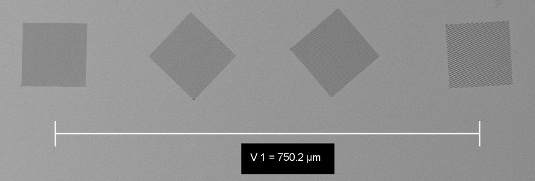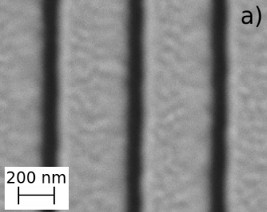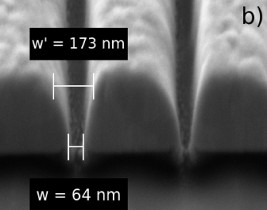New insight into wire-grid polarizers
04.12.2015
During the past years, we have been developing a miniature Quantum Key Distribution transmitter unit that can be controlled by a smartphone (see here). In order to generate the polarization states required for the standard BB84 protocol, we fabricate high-quality near-infrared gold wire-grid polarizer arrays using Focused Ion Beam milling. Such polarizers are very compact and thus compatible with integrated light sources. However, achieving a high grade of polarization remains a technical challenge.

Top view of the four polarizer arrays.
A known issue is the often reported discrepancy observed between the performances derived from Finite-Difference in Time-Domain simulations and experimental data. While top Scanning Electron Microscope pictures are usually used to determine the distance between the wires, and therefore to predict the extinction ratio, we show that the shape of the wire is also highly relevant. Typically, the gold stripes exhibit a trapezoidal cross-section, resulting in an inhomogeneous slit width across the film depth. Taking this into account allows us to understand the discrepancy and to make realistic predictions.


a) Zoomed top view on one of the arrays. b) Side view showing the trapezoidal structure of the slits.
For opening angles up to 20°, we demonstrate that it is sufficient to consider the average slit width to obtain good agreement between experiment and simulation. Using this refined but still easy to use model, we optimized our grating parameters to demonstrate the highest extinction ratio (up to 1:1800) observed so far for 850 nm light.

